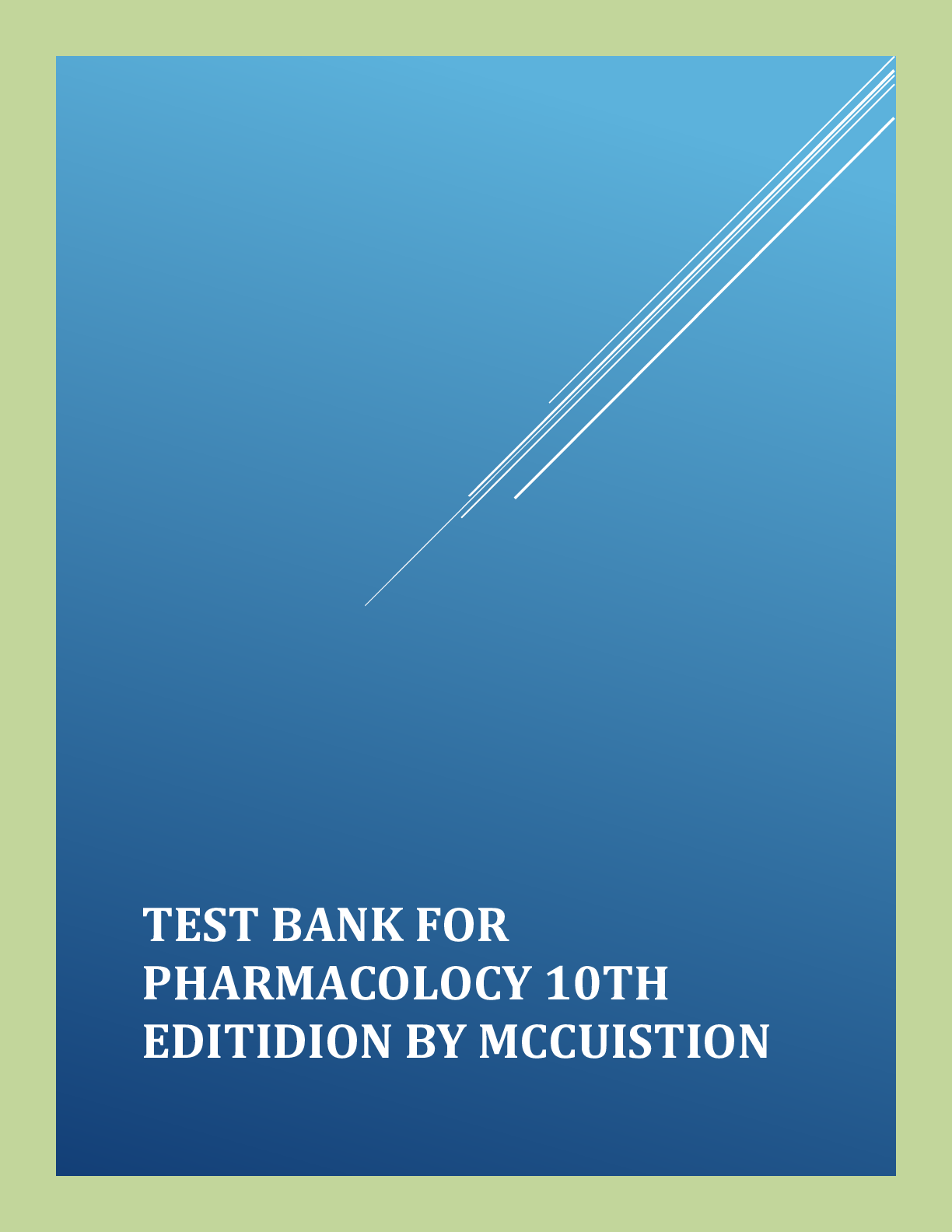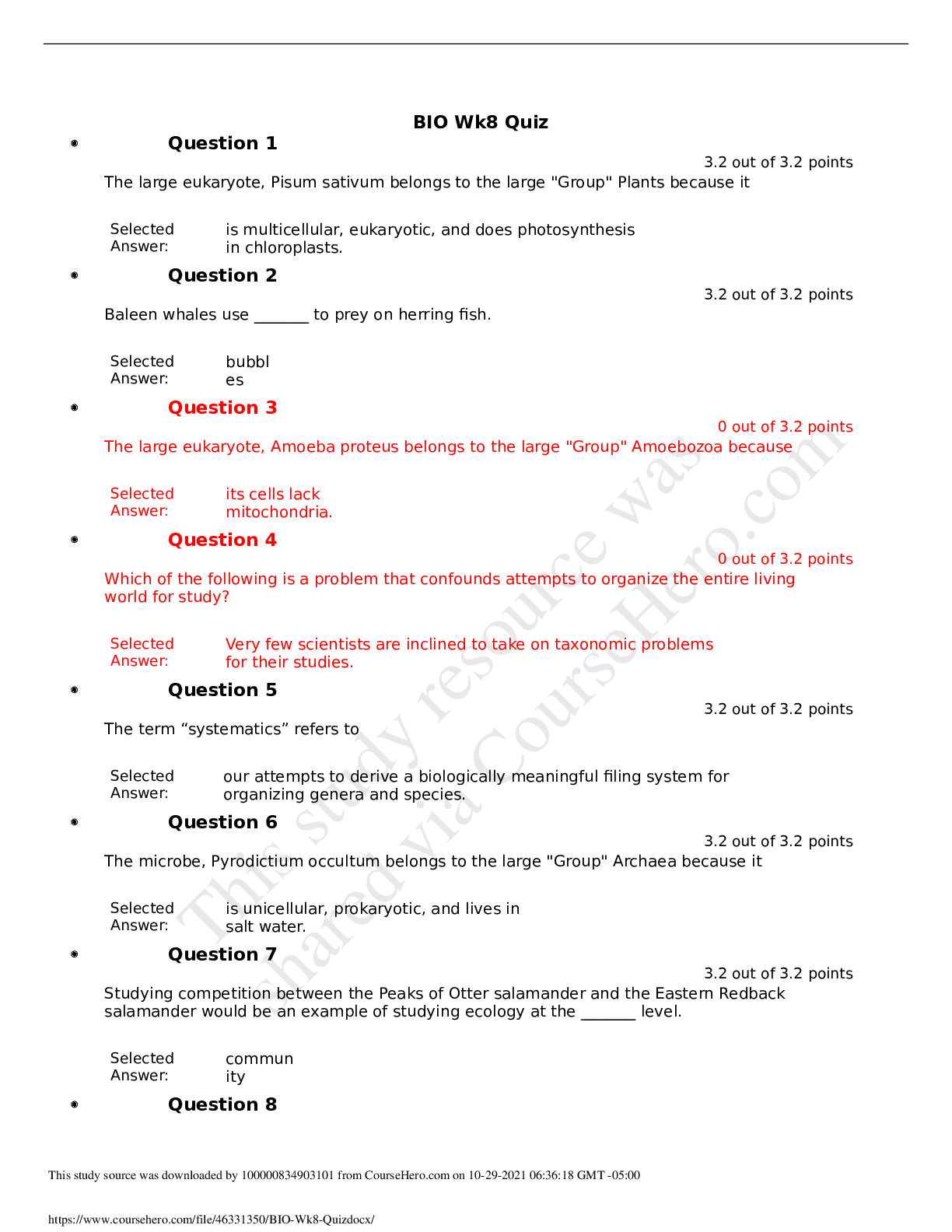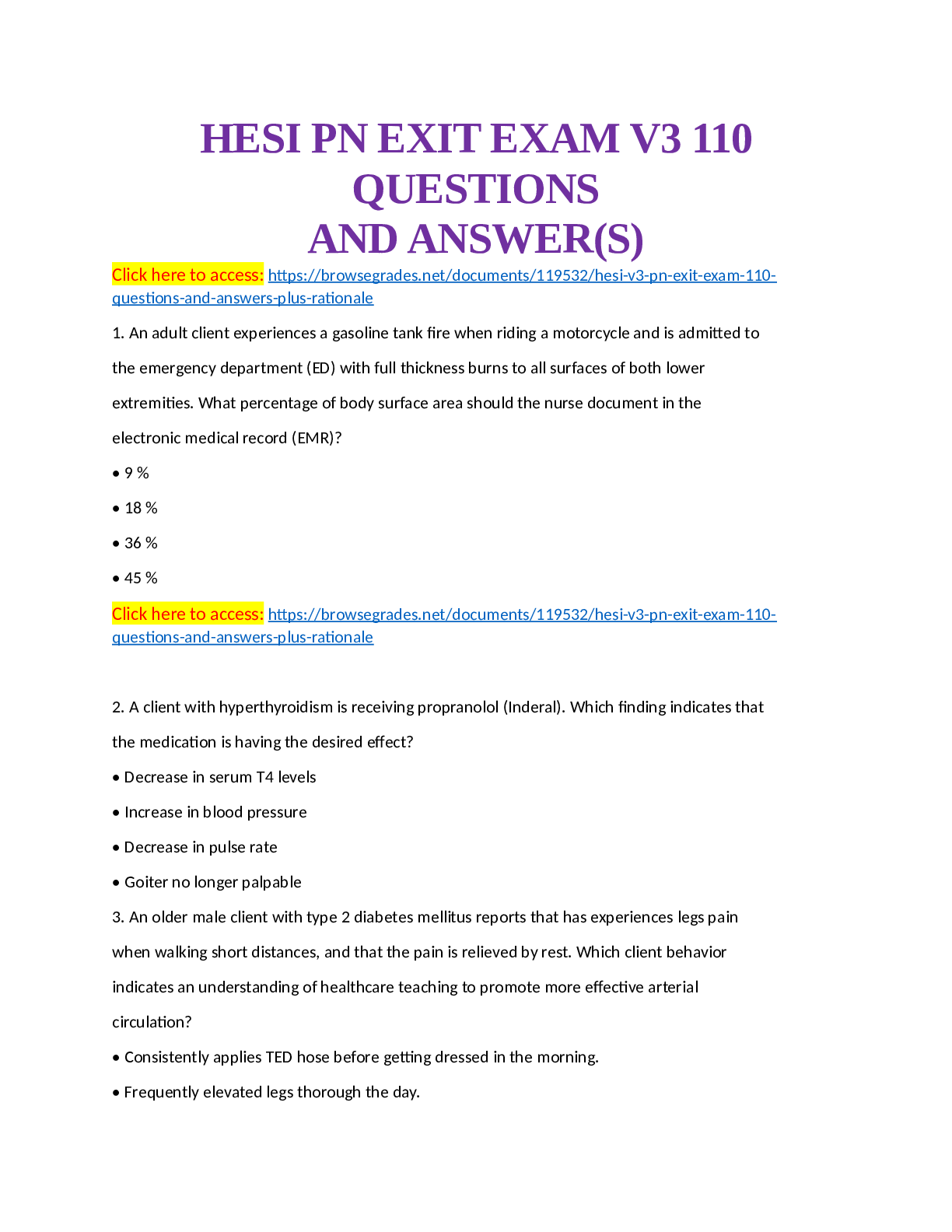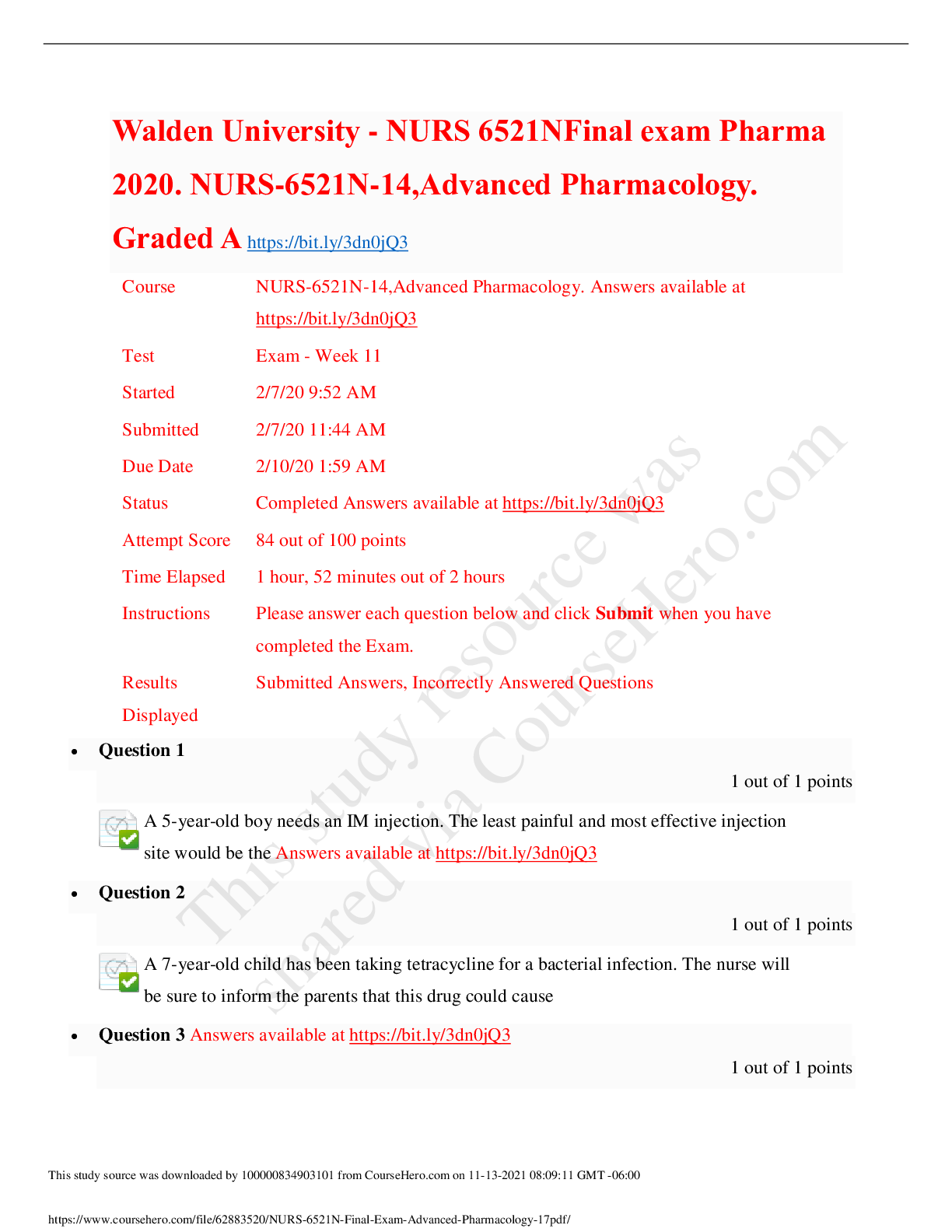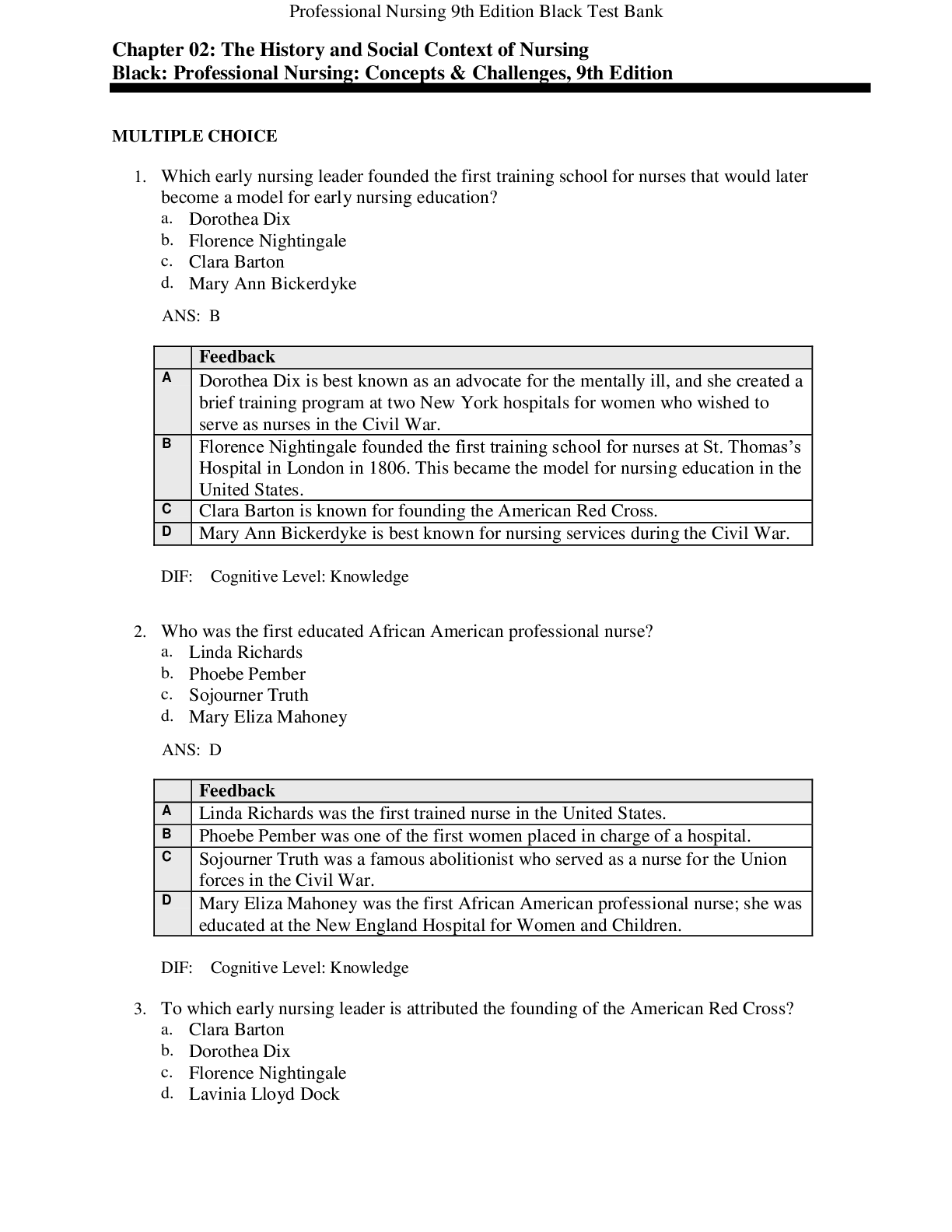*NURSING > AQA QUESTION and MARK SCHEMES > Study Guide Exam #1 Mental Health Summer 2019 (All)
Study Guide Exam #1 Mental Health Summer 2019
Document Content and Description Below
Chapter 1: Foundations of Psychiatric –Mental Health Nursing 1. Factors contributing to mental illness (individual, interpersonal, and social/cultural). Individual, or personal, factors includ... e a person’s biologic makeup, autonomy and independence, self-esteem, capacity for growth, vitality, ability to find meaning in life, emotional resilience or hardiness, sense of belonging, reality orientation, and coping or stress management abilities. Individuals may believe that their situation is hopeless. Interpersonal, or relationship, factors include effective communication, ability to help others, intimacy, and a balance of separateness and connectedness. Social/cultural, or environmental, factors include a sense of community, access to adequate resources, intolerance of violence, support of diversity among people, mastery of the environment, and a positive, yet realistic, view of one’s world. Social/cultural factors include lack of resources, violence, homelessness, poverty, an unwarranted negative view of the world, and discrimination such as stigma, racism, classism, ageism, and sexism. 2. Three purposes of the Diagnostic and Statistical Manual of Mental Disorders, Fifth Edition (DSM-5). To provide a standardized nomenclature and language for all mental health professionals To present defining characteristics or symptoms that differentiate specific diagnoses To assist in identifying the underlying causes of disorders 3. Historical perspectives of the treatment of mental illness (Examples include mental disorders were considered either to divine, demonic, or possessed, “bloodletting”, incarceration in dungeons, witch hunts, insane asylums, and institutionalization etc.). People of ancient times believed that any sickness indicated displeasure of the gods and, in fact, was a punishment for sins and wrongdoing. Those with mental disorders were viewed as being either divine or demonic, depending on their behavior. Imbalances of the four humors were believed to cause mental disorders; so treatment was aimed at restoring balance through bloodletting, starving, and purging. The mentally ill were viewed as possessed. Priests performed exorcisms to rid evil spirits. When that failed, they used more severe and brutal measures, such as incarceration in dungeons, flogging, and starving. In 1547, the Hospital of St. Mary of Bethlehem was officially declared a hospital for the insane, the first of its kind. By 1775, visitors at the institution were charged a fee for the privilege of viewing and ridiculing the inmates, who were seen as animals, less than human. In the 1790s, a period of enlightenment concerning persons with mental illness began. Philippe Pinel in France and William Tuke in England formulated the concept of asylum as a safe refuge or haven offering protection at institutions where people had been whipped, beaten, and starved just because they were mentally ill. Dorothea Dix (1802–1887) began a crusade to reform the treatment of mental illness after a visit to Tuke’s institution in England. A great leap in the treatment of mental illness began in about 1950 with the development of psychotropic drugs, or drugs used to treat mental illness. Chlorpromazine (Thorazine), an antipsychotic drug, and lithium, an antimanic agent, were the first drugs to be developed. Hospital stays were shortened, and many people became well enough to go home. In 1963 with the enactment of the Community Mental Health Centers Construction Act. Deinstitutionalization, a deliberate shift from institutional care in state hospitals to community facilities, began. In addition to deinstitutionalization, federal legislation was passed to provide an income for disabled persons: Supplemental Security Income (SSI) and Social Security Disability Income (SSDI). This allowed people with severe and persistent mental illness to be more independent financially and to not rely on family for money. 4. What is meant by the term “revolving door effect?” Some believe that deinstitutionalization has had negative as well as positive effects. The term revolving door effect. Although people with severe and persistent mental illness have shorter hospital stays, they are admitted to hospitals more frequently. The continuous flow of clients being admitted and discharged quickly overwhelms general hospital psychiatric units. In some cities, emergency department (ED) visits for acutely disturbed persons have increased by 400% to 500%. 5. What is the role of managed care in containing cost for the treatment of mental illness? Managed care is a concept designed to purposely control the balance between the [Show More]
Last updated: 2 years ago
Preview 1 out of 11 pages

Buy this document to get the full access instantly
Instant Download Access after purchase
Buy NowInstant download
We Accept:

Reviews( 0 )
$11.00
Can't find what you want? Try our AI powered Search
Document information
Connected school, study & course
About the document
Uploaded On
Nov 17, 2021
Number of pages
11
Written in
Additional information
This document has been written for:
Uploaded
Nov 17, 2021
Downloads
0
Views
91

